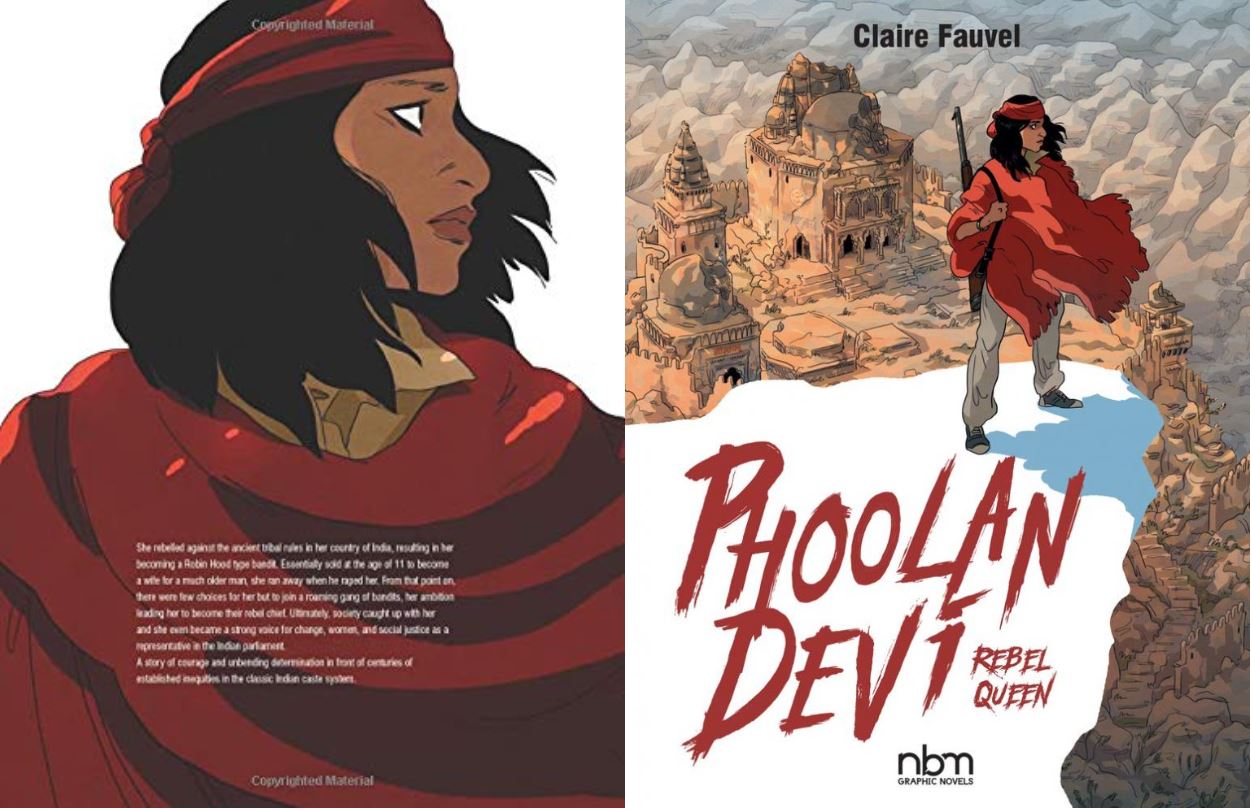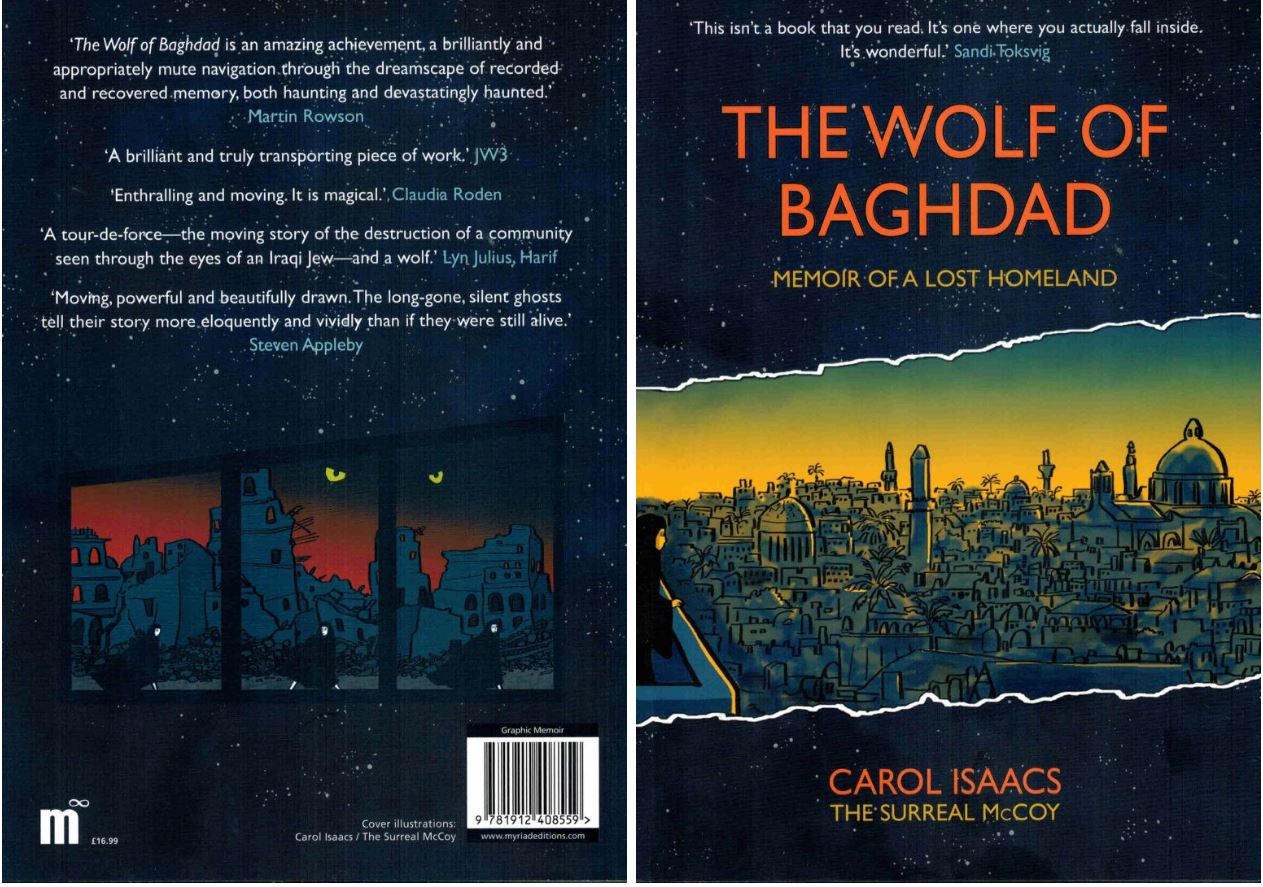
By Nicolas Finet, Tony Lourenço, Thierry Lamy, Céheu, Samuel Figuiére, Alex Imé, Abdel de Bruxelles, Joël Alessandra, Gilles Pascal, Christelle Pécout, Antoine Pédron, Léah Touitou, Yvan Ojo, Toru Terada, Christopher, Antoane Rivalan, Martin Texier, Martin Trystram, Romain Brun, Will Argunas, Estelle Meyrand, Fred Grivaud, Georges Chapelle, Chandre, Kongkee, Christophe Kourita, Juliette Boutant, Afuro Pixe, Lauriane Rérolle, Pierre Vrignaud , Mathilde d’Alençon, Emmanuel Bonnet & various: translated by Peter Russella (NBM)
ISBN: 978-1-68112-336-3 (HB) eISBN: 978-1-68112-337-0
Graphic biographies are all the rage these days and this one – originally released on the continent in 2016 – is one of the most comprehensively researched and emotionally rewarding that I’ve seen yet: part of NBM’s Music Star in Comics series guaranteed to appeal to a far larger audience than comics usually reach. It certainly deserves to and might make a perfect gift if any of us make it to the Great December fun-fest/Gig in the Sky…
If you’ve never heard of Pink Floyd there may not be much point in you carrying on past this point, but if you are open to having your mind blown visually whilst visiting wild spaces, please carry on and perhaps invest some time and effort into checking out the music too…
Still with us? Okay then…
As if cannily re-presented popular culture factoids and snippets of celebrity history – accompanied by a treasure trove of candid photographs, song lyrics, posters and other memorabilia – aren’t enough to whet your appetite, this addition to the annals of arguably the most creative and conflicted assemblage of musicians ever bundled in the back of a tour bus also offers vital and enticing extra enticements.
Author, filmmaker, journalist, publisher, educator, translator/music documentarian Nicolas Finet has worked in comics over three decades: generating a bucketload of reference works – such as Mississippi Ramblin’ and Forever Woodstock. He adds to his graphic history tally (Prince in Comics; Love Me Please – The Story of Janis Joplin 1943-1970 and David Bowie in Comics) with this deep dive into the crazed career of the ultimate cosmic explorers and rebellious cultural pioneers. His scripts of the comics vignettes compiled here are limned by international strip artists, providing vividly vibrant key moments in the band’s progress, with each augmented by photo/prose feature articles by Tony (Prince in Comics) Lourenço on chapters #1-14 and Thierry (David Bowie in Comics) Lamy for chapters #15-28.
The ever-growing show starts small and quite quietly in ‘1962-1967: Psychedelia and Light Shows’, as envisioned by Céheu with the meeting of school chums and enthusiastic Blues lovers in Cambridge. Roger Waters, Dave Gilmour and Roger “Syd” Barrett were all middle-class intellectual teens certain of succeeding in life – although no strangers to personal tragedy. However, as they progressed educationally and moved towards London – meeting Rick Wright and Nick Mason on the way – Music increasingly stole their souls…
Illustrated by Samuel Figuiére, the new band was making waves by 1965 and awash in the euphoria of first gigs by ‘1967: Dazzling Beginnings’: even taking on ardent fans Peter Jenner and Andrew King as their managers whilst they mixed fantasy, science fiction concepts and art school psychology with Avant Garde lighting effects in increasingly expansive live performances…
Alex Imé and colourist Mathilde d’Alençon depict ‘1968: A New Team’ as Mason, Waters, Wright & Syd capped off a perfect start with hit singles Arnold Layne and See Emily Play with a breakthrough album Piper at the Gates of Dawn, as creative touchstone Barratt butted heads with dogmatic recording bosses and labels. Soon drugs, pressure and his own shaky mental health would push Syd into relinquishing touch with reality…
After introducing Storm Thorgerson and design specialists Hipgnosis (a lifelong secret weapon in Floyd’s conceptual arsenal), Abdel de Bruxelles’ ‘1967-1968: Syd Barrett, A Genius Struck Down’ reveals how a Rock & Roll lifestyle irreparably damaged the fragile genius who was the soul of the group and what happened with him after he left, whilst Joël Alessandra illuminates the next stage of the band’s creative growth in ‘1969 – Pink Floyd at the Movies: MORE’…
Hungry to prove their creative worth and collaborative ethic, the unstoppable rise of the band is further explored in ‘1969 – A Record or Two’ by Gilles Pascal, whilst less happy film fun manifests in Christelle Pécout’s ‘1970 – Pink Floyd at the Movies: ZABRISKIE POINT’.
Internationally renowned, critically adored and hugely popular across the globe, a string of hit albums and monster tours are detailed (as Dave Gilmour returns to the line-up) in Antoine Pédron’s ‘1970 – A Cow and a Full Orchestra’ and ‘1971 – Welcome to Trippy Rock’ by Léah Touitou. Then Yvan Ojo shares the story of the world’s weirdest live gig in ‘1971 – A Day in Pompeii’, before Toru Terada depicts another astounding art-driven side project in ‘1972 – Pink Floyd at the Movies: OBSCURED BY CLOUDS’…
The band’s world was about to change forever, even as internal dissent heralded a moment to pause and reflect. Christopher’s oblique approach illustrates ‘1973 – A Lunar Journey in the Form of Cosmic Validation’ as 8th album The Dark Side of the Moon elevated Pink Floyd to another level of success… and pressure.
This is counterpointed by Antoane Rivalan’s flashback moment ‘1967-1994 – Hipgnosis: Music to Look At’ and further revelations regarding Thorgerson and his designers before Martin Texier focuses on what true innovators do once they’ve done everything in ‘1971-1974 – Wavering: The Household Objects’. The answer for the group was individual endeavours and looking backwards as ‘1975 – Wish You Were Here’ by Martin Trystram honoured old mate Syd, just as internal tensions were peaking…

For years deeply politicised, antiwar activist Roger Waters had been seeking to appoint himself leader of a creative collective that didn’t want one, and his campaign to take charge – which eventually ruptured the band – really began with ‘1977 – Dogs, Sheep, Pigs’ as captured by Romain Brun. Incensed by the Falklands War but creating masterpieces despite breaking childhood bonds as seen in Will Argunas’ ‘1979-1982 – The Wall’ (album, tour and movie), the inevitable occurred in Estelle Meyrand’s ‘1983 – Break Up’…
Dark days of dissolution and dispute are exposed in ‘1985 – The Great Beanpole Throws in the Towel’ by Fred Grivaud, ‘1987 – Pink Floyd Rolls the Dice Again’ by Georges Chapelle and Terada’s tour overview ‘1966-2005 – Absolutely Live’.
Reconciliatory moments triggered by time apart are seen in ‘1994 – Recapturing the Magic’ (by Chandre, coloured by Emmanuel Bonnet) as work on new album The Division Bell leads to the surviving but separate players partially reuniting for Kongkee’s ‘1996 – In the Pantheon of Rock’ before political protest movement Live 8 brought them together as seen in Christophe Kourita’s ‘1996-2005 – On the Back Burner’.
As friends and old enemies passed away with increasing frequency, their era’s end is acknowledged by Juliette Boutant in ‘2006-2012 – To its Dead, a Grateful Pink Floyd’ and Afuro Pixe’s ‘2014 – One More for the Road’, with speculative appraisal coming in ‘1967-2014 – Four Inspired Boys’ by Lauriane Rérolle and an exploration of legacy visualised in Pierre Vrignaud’s ‘2015-Infinity – Pink Floyd’s Children’…
This compelling and remarkable catalogue of cultural heritage and achievement concludes with Pink Floyd’s Discography (including all solo and off-brand releases), listings of Films, DVD, and Videos, Websites of Note, Bibliography and Recommended Reading plus a copious Acknowledgements section.
Pink Floyd in Comics is an astoundingly readable, beautifully realised treasure for comics and music fans alike: one to resonate with all who love to listen, look and fritter and waste the hours in an off-hand way…
© 2022 Editions Petit as Petit. © 2024 NBM for the English translation.
Pink Floyd in Comics will be published on 13th August. 2024 and is available for pre-order now. NBM books are also available in digital editions. For more information and other great reads see http://www.nbmpub.com/



















